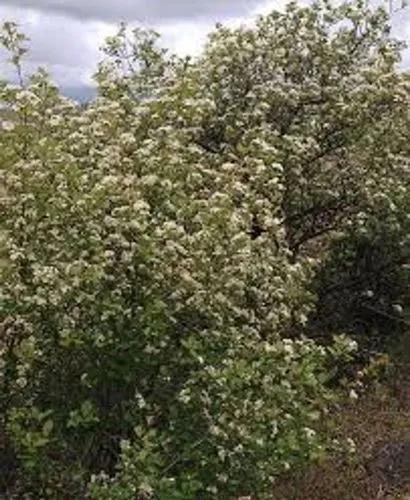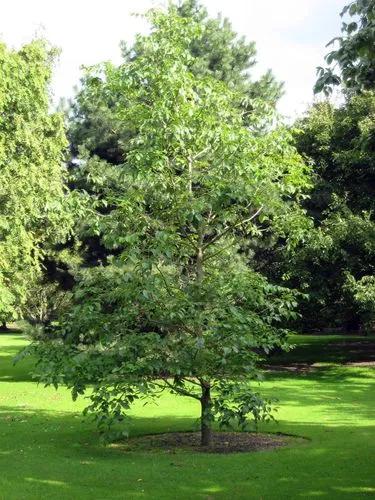Palms have large, evergreen leaves that are either palmately ('fan-leaved') or pinnately ('feather-leaved') compound and spirally arranged at the top of the stem. The leaves have a tubular sheath at the base that usually splits open on one side at maturity. The inflorescence is a spadix or spike surrounded by one or more bracts or spathes that become woody at maturity. The flowers are generally small and white, radially symmetric, and can be either uni- or bisexual. The sepals and petals usually number three each, and may be distinct or joined at the base. The stamens generally number six, with filaments that may be separate, attached to each other, or attached to the pistil at the base. The fruit is usually a single-seeded drupe (sometimes berry-like) but some genera (e.g., Salacca) may contain two or more seeds in each fruit. The Arecaceae are notable among monocots for their height and for the size of their seeds, leaves, and inflorescences. Ceroxylon quindiuense, Colombia's national tree, is the tallest monocot in the world, reaching up to 60 m tall. The coco de mer (Lodoicea maldivica) has the largest seeds of any plant, 40–50 cm in diameter and weighing 15–30 kg each (coconuts are the second largest). Raffia palms (Raphia spp.) have the largest leaves of any plant, up to 25 m long and 3 m wide. The Corypha species have the largest inflorescence of any plant, up to 7.5 m tall and containing millions of small flowers. Calamus stems can reach 200 m in length.
Palmeira Care
Arecaceae



How to Care for the Plant

Water

Keeping the soil consistently moist is key; allow the top few centimeters of soil to dry, and then water thoroughly. This is a humidity-loving plant, so placing by a humidifier or frequent misting (3-4x weekly), is ideal. Light: Extremely tolerant of low light.

Pruning

Pruning plumeria can help keep the tree to a smaller size and help remove dead and diseased branches. Many gardeners wonder when is the best time to prune plumerias. When pruning a healthy tree to maintain size, it is important to prune only in the winter or early spring to avoid causing damage to the blooming cycle. Trimming off dead or diseased branches can be done at any time of the year and will not affect the blooms or harm the health of the tree. Pick the right tools to use for pruning. A sharp knife works great for smaller branches. Sharp pruning shears are good for medium size limbs. Pruning saws are good for branches that are more than 3 inches (8 cm.) in diameter. Keep your tools as sharp as possible to make even and clean cuts. Jagged, unclean cuts invite infection to the tree. Sterilize the blade of your tools after each cut. This will help prevent any disease spread, even if your tree is healthy. Rubbing alcohol is the best thing to use for sterilizing.

Fertilizer

Plumeria plants require a lot of phosphorous. This is the middle number on fertilizer labels. You also want to avoid fertilizers with too much nitrogen, which is the first number on fertilizer labels. Nitrogen encourages growth, and if you’re trying to grow a tree in a pot, this is the last thing you want. Using a plumeria flower fertilizer with a low first number will make for a more compact tree. Plumeria plants require slightly acidic soil. Constant fertilization can raise acid levels too high, however. If this happens, add some Epsom salts to the soil to neutralize it. Adding 1-2 tbsp every month should do the trick.

Temperature

Palmeira is 27m above sea level. The climate in Palmeira is warm and temperate. In winter, there is much more rainfall in Palmeira than in summer. According to Köppen and Geiger, this climate is classified as Csb. In Palmeira, the average annual temperature is 14.6 °C | 58.2 °F. The rainfall here is around 1542 mm | 60.7 inch per year.

Popularity

55 people already have this plant 5 people have added this plant to their wishlists
Discover more plants with the list below
Popular articles






